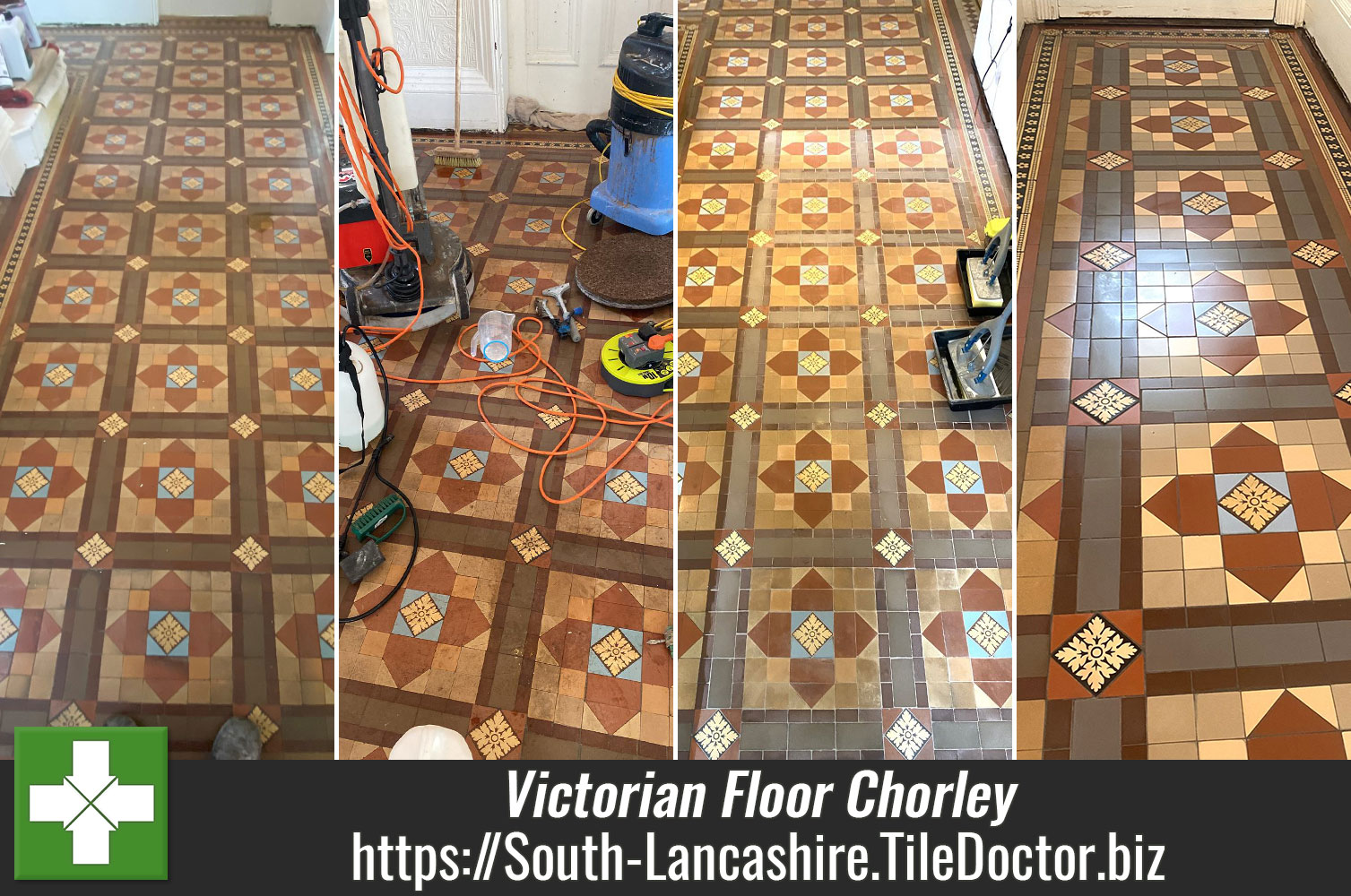Getting the Best from a Victorian Floor in Chorley Lancashire with Tile Doctor products
Joanna contacted us with regard her late Victorian (1893) L shaped tiled hallway at their large family home in Chorley.
They had discovered the floor under carpet during renovation work some years ago and had some work done to replace damaged and missing tiles. However, the floor had not had a deep clean an and therefore much of the floor had ingrained dirt so never looked clean. Having lived with this the problem which had only got worse over time we were asked to finish the renovation.
I went over to property to survey the floor and work out a plan to restore it. Whilst there I realised the property had a cellar and was concerned that water from the vigorous cleaning process may seep downstairs resulting in staining to the ceiling. To avoid this, I realised I would need to complete the cleaning using low moisture gel-based products. Whilst there I also took several moisture readings with a damp meter which indicated that it would be best to use a fully breathable non acrylic sealer to protect the floor.
 | 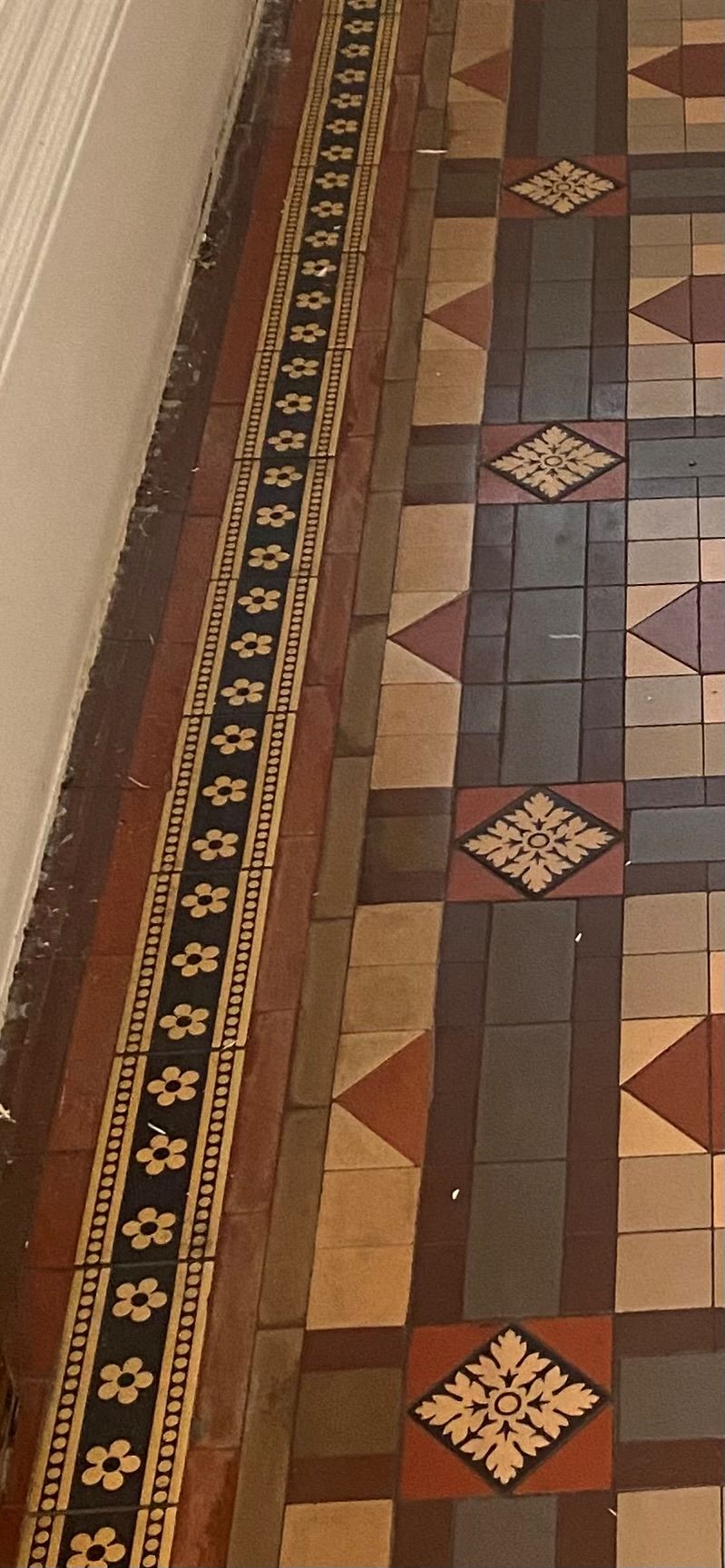 |
Following the survey, I was able to work out a comprehensive plan for restoring the floor and provide the owner with an accurate quote for the work which was accepted.
Deep Cleaning a Victorian Tiled Hallway
Working in sections work commenced with a layer of Tile Doctor Oxy-Gel which was left to dwell before working it in with a low-speed weighted buffer fitted with a coarse 100-grit milling pad. The slurry generated was then vacuumed away before giving the floor a light rinse, working in small sections, and quickly vacuuming away the waste.
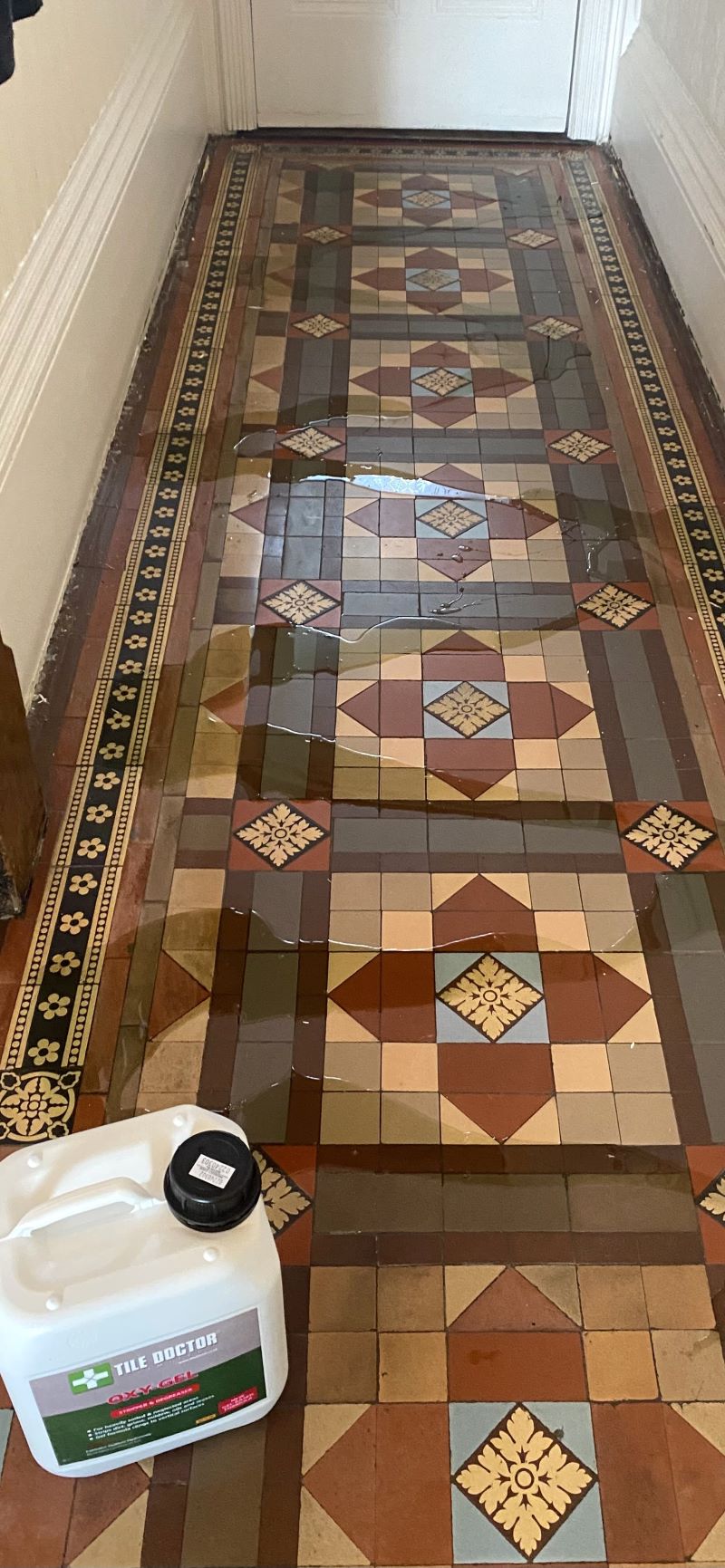 | 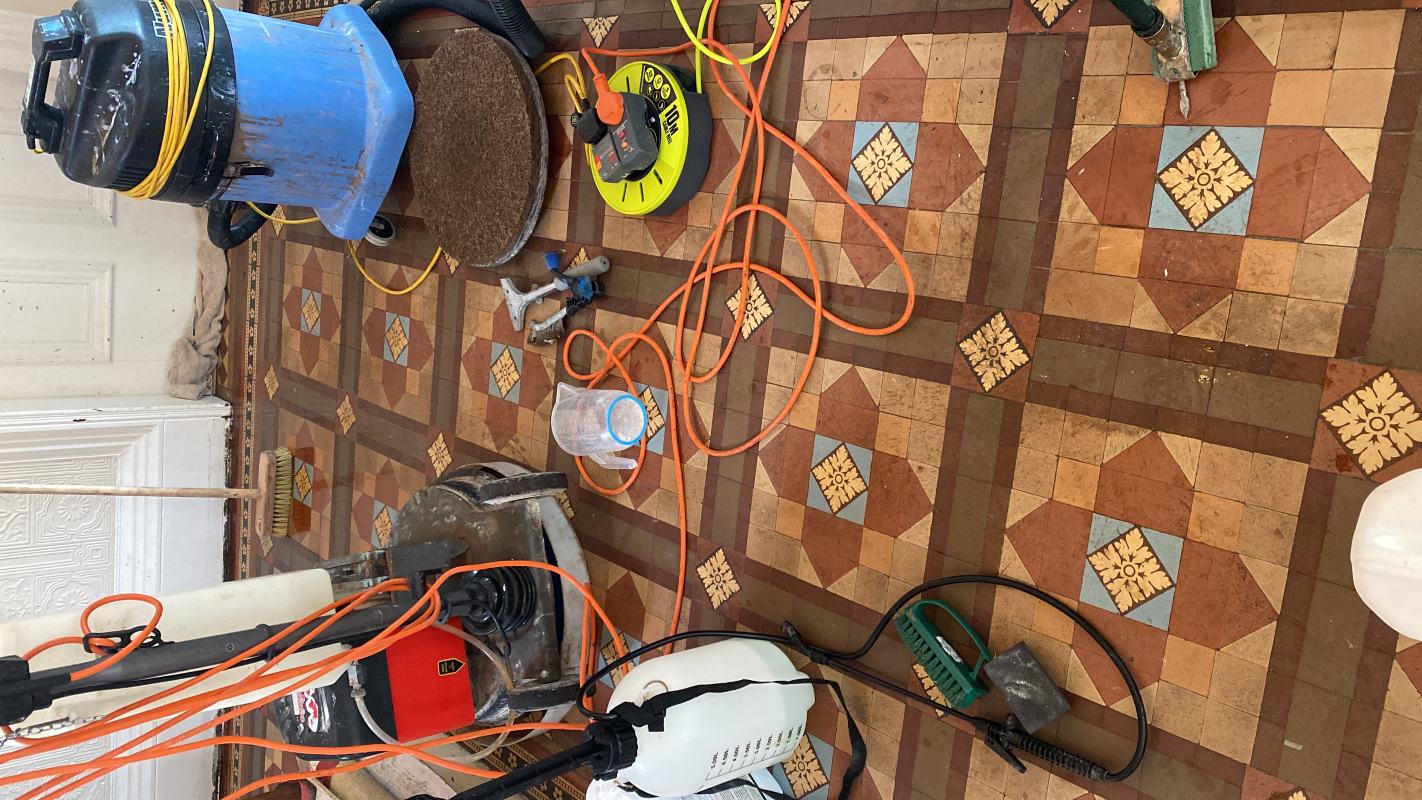 |
To further clean the tiles a thin layer of Tile Doctor Remove and Go was then applied and after five minutes scrubbed in using a 200-grit coarse milling pad, vacuuming the waste away afterwards.
With the floor showing great improvement we set about tidying up the edges using a set of diamond hand burnishing blocks. A scraper and a hand brush were used to remove paint splashes, carpet adhesive and dirt already loosened by the main clean. This was followed with the application of a 400-grit burnishing pad, again working in small areas to minimise water getting into the floor
Last step of the restorative cleaning process was to treat the tiles to an acid rinse using Tile Doctor Acid Gel. This was allowed to dwell for around five to ten minutes before being worked in with a Black scrubbing pad. The acidic nature of the product neutralises the alkaline cleaners used earlier and dissolves alkaline salts built up in the tiles which is a common problem on these older floors. The soiled solution was extracted as before and rinsed thoroughly with cloths and water to minimise moisture levels, vacuuming away the waste as I went.
The floor was allowed to dry thoroughly, and a damp meter reading confirmed the moisture levels back to where they started. A quick dry burnish using an 800-grit burnishing pad with dust vacuumed away was the final preparation before sealing could commence.
Sealing a Victorian Tiled Hallway
After testing sealers, the preference was to revive the colours in the tile and give the floor a subtle sheen. Based on this I applied Tile Doctor X-Tra Seal which was ideal for as first coat revived the colours in the tile and the second coat added a very subtle sheen finish.
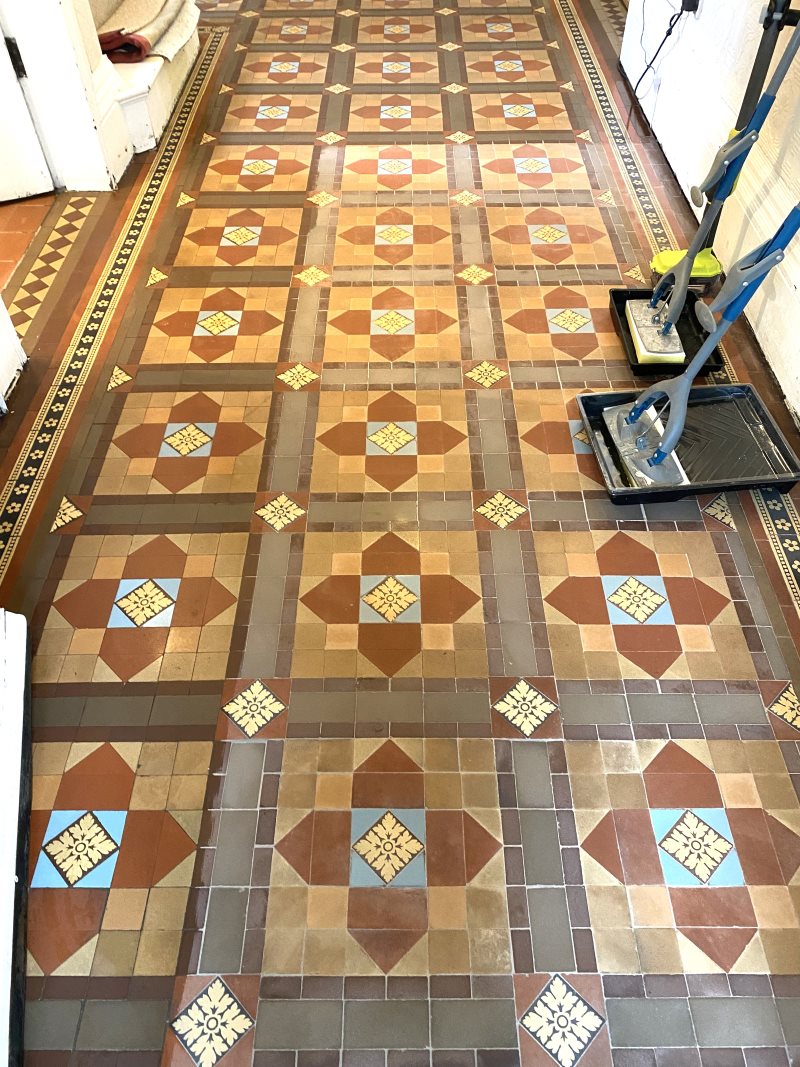 | 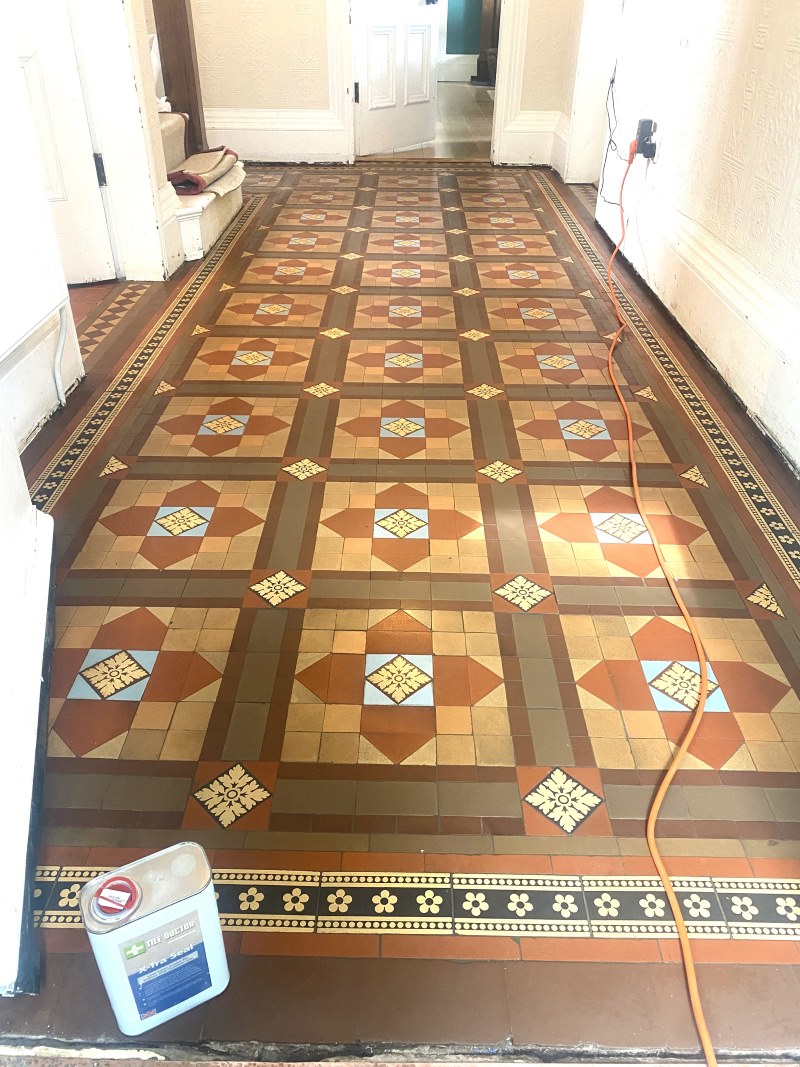 |
After allowing the floor to partially dry, a light burnish with a soft white pad was the final part of the process.
Joanna stated she was very pleased with the results, and we discussed aftercare using Tile Doctor’s pH Neutral cleaner to prolong the life of the sealer. She also later gave a 5 Star review along with the following comment:“Kevin was excellent. He responded promptly to my enquiry and answered all my questions. Delighted with my lovely clean floor!”
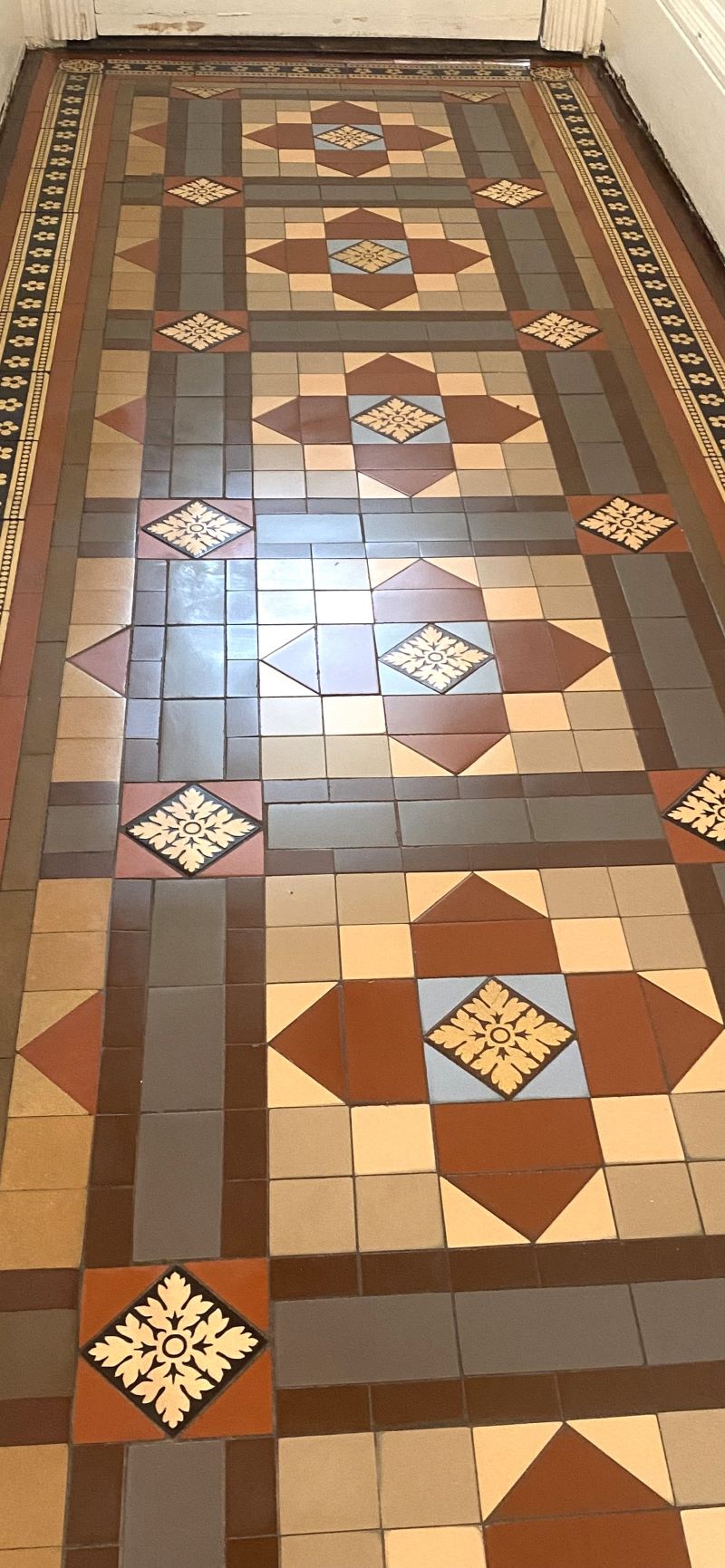 | 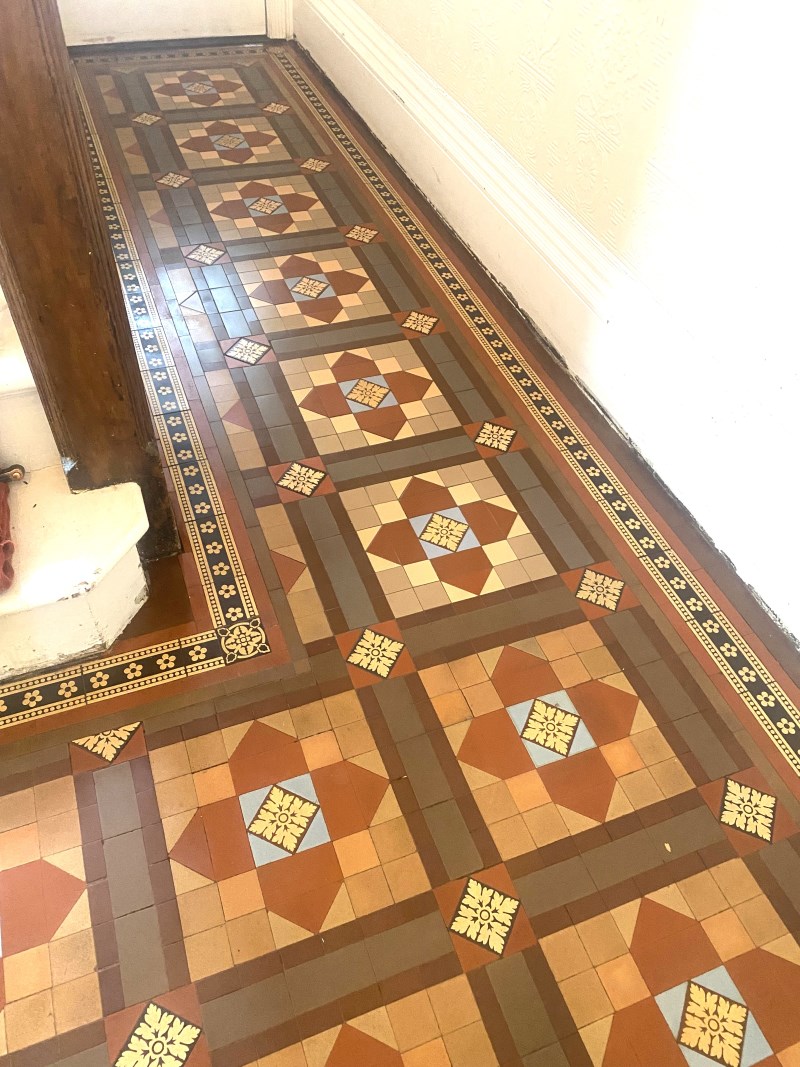 |
Source: Victorian Tile Cleaning Solutions and Services in Chorley Lancashire
